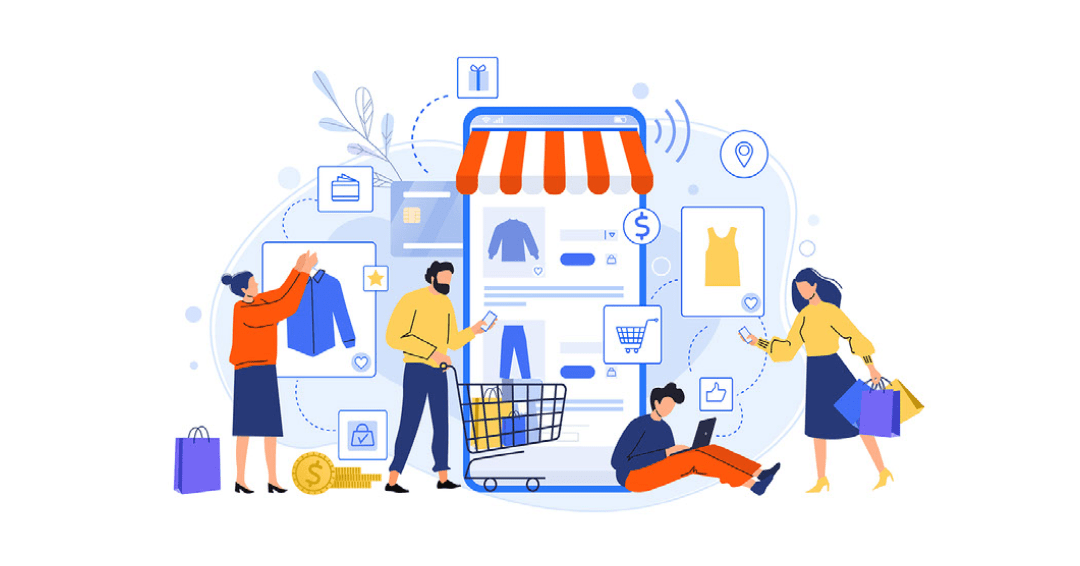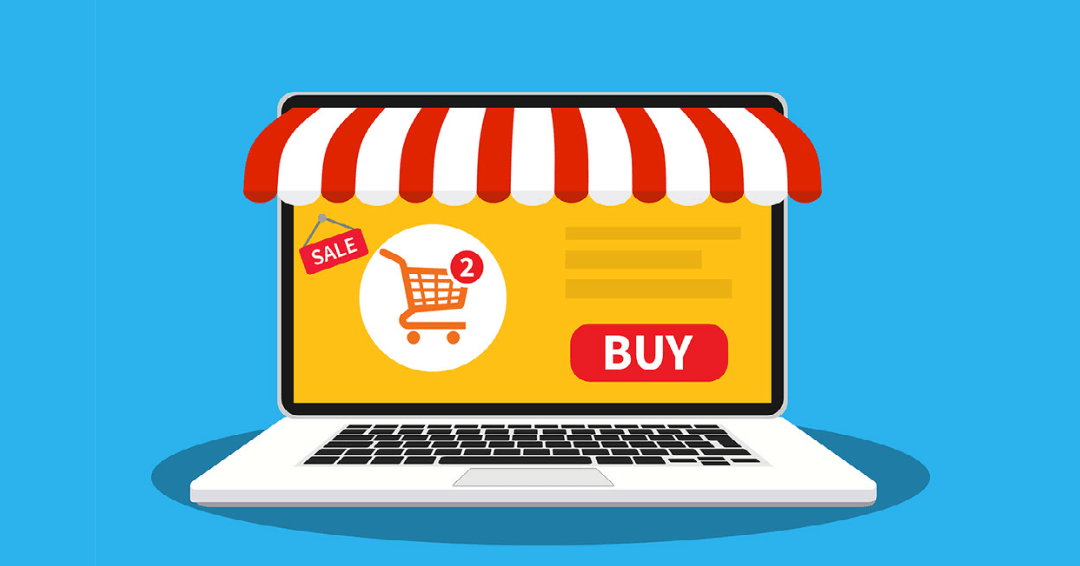eCommerce app UI/UX design Tips to increase your startup
Did you know that 76% of customers will switch to a competitor if they experience just a single issue with the brand? It means that the bad UI/UX design of the products can lead to the failure of your digital commerce startup.
These days, competition in the eCommerce market is tough. Many companies offer competitive prices and fast delivery, so friendly customer service and a well-thought-out interface are some of the several things that could help you stand out. If your solution is not easy to navigate, a user will just download another one.
At Born Techies, we know how important it is to research the audience, plan, produce and test the interface for startups’ progress. That’s why we grew up with five tips for eCommerce app UI/UX design that will become your solution. Plus, errors to bypass and a lot of individuals to appropriately obtain the incentive.
Why is UI important in the eCommerce sector?
Let’s be honest, designing digital selling and purchasing platforms has been a recent growing trend. UI (user interface design) is exactly what could improve your solution stand out from your opponents. A well-executed and deliberate UI design of the app will turn possible consumers into customers by creating the interaction between users and your app the most refreshing and transparent. If the ordering method went easily and the consumer had an overall enjoyable occurrence with your app, they are very likely to come back within a short time.

Even though the number of apps is increasing, the quality of their UI/UX design sometimes has room for growth. To assist you to avoid common mistakes from the beginning and save your time for designing and technical stipulations, our team designed the latest guide on UI design in eCommerce mobile apps.
Smooth sign-up
Tip #1 to add to our eCommerce UI kit with hacks is to hold the login form clear and compact. Firstly, our suggestion is to request important information to generate a user profile. A Name, an email address, a phone number, and an address for delivery – yes. Household income, how did they reach out about us – no, because at the login stage, users are not ready to entrust all their info yet and want to be done with the form as soon as reasonable to obtain an order. But you can request those questions later when they perform different orders and are retained if you are preparing to accumulate that data for audience analysis.
Secondly, all elements and buttons should be collected and highlighted in color to draw the user’s application. If some fields are mandatory, while others are not — it also has to be marked down.
The main rule is easy. Interface layout should navigate the consumer and guide where to tap next.
There are various options for sign-in that you can utilize for your eCommerce solution. Just determine which one satisfies your aims and vision the most reliable.
Prompt sign-up
Don’t ask users to lose their data as soon as they open and download the app. Instead, let them easily browse your app and become interested, and when they are ready to order, they will be asked to load in the short sign-in or login form.
Social media integration
Supplementing options to log in with Google, Facebook or Instagram performs the process more secure and stable. It is proven that consumers are more convinced when they consume less time on the registration form.
Autofill
This feature is desirable for both iOS and Android eCommerce apps. The system would allow a user to automatically fill approaches in with the contact information if they turned it on in their surroundings.
Guest checkout
Some users don’t want to produce a personal account at all, so here is the solution – they can create and order as a visitor and contribute a minimum amount of private data. According to stats, 37% of users abandon their carts because they have to sign up. However, the guest regime has a drawback: without a full sign-in, consumers will not be able to browse their order history or attach items to their favorites. So, we recommend being primarily focused on other options and educating consumers on benefits they will gain if they register.
Thumb-friendly zone
The second hack is to locate all keys or buttons within the thumb-friendly zone. Want to know where it is? Just informally clutch your phone in your hand and examine what edges of the display you can communicate with your thumb only.
Relevant note: acknowledge both right-handed and left-handed users when you are planning the design elements for your answer.
While the thumb-friendly zone has not been officially attached in Apple and Google app development guidelines, it is an unspoken rule amongst developers. Frankly speaking, if your solution lacks this characteristic, it will raise questions from app market parties.
Smart Search
The third tip for your eCommerce app UI is attaching several search options for user convenience. The less time they waste searching for the appropriate thing they require, the faster they are to determine to purchase and progress with the cart.

Here are a few examples of search options you can attach to your eCommerce app.
Text – Just type in the name of the item you are seeing in the search bar and see the outcomes.
Image- If a user perceives the items on social media such as Instagram, Facebook but doesn’t know the correct name of the product or the brand, they can just screenshot it and utilize it in the image search.
Voice- Advanced users are often too occupied to type, so it is always beneficial to provide them with the opportunity to utilize voice search to discover what they are seeing.
Categories- To determine that you care about your users and their time, we suggest cutting all products into sections and letting consumers browse particular parts of the catalogue. For example, categories could incorporate electronics, cosmetics, clothes, toys, or household items.
The search bar should be halfway located on the top of the page and provide some recommendations to users on how to look items up. Identify to attach filters to assist consumers sort items by price, color, brand, and other peculiarities.
CTA
To be high-converting, your clarification will require various call-to-action buttons, depending on the stage the user is at and how fast they are to make a purchase. For instance, when a consumer appends an item to their cart, you can kindly suggest them to see the total with the ‘Continue to cart’ or ‘Checkout’ buttons instead of attempting to ‘Choose the payment alternative’ right away.
Another tip from us is to produce CTAs seem like original buttons. Sounds way too easy, but this tip is often forgotten. They should have borders, shadows and be decorated to stand out. Get sure you have some difference between initial and secondary buttons to guide users through their app journey. For example, the initial CTA could be black or red, while the ghost one transparent.
Here is an instance from our occurrence. When we were designing the platform for purchasing tickets to music festivals, we determined to place the cost on the CTA at the search stage to let the user know possible costs up-front.
Checkout
The checkout procedure should be as quick as the login. We recommend avoiding large forms and methods because the high number of broken carts is often compared to additional fees and the powerful complexity of the method. Also, make sure the consumer can examine the total price with delivery and service fees involved before moving forward. High or deep additional costs are often the reasons why some 83% of people drop their carts.

To circumvent overburdening the checkout page, many organizations utilize the progressive declaration point as a part of the eCommerce app UI/UX design. This design model provides the sequencing of the information over various screens or sets. A user can directly connect a plus icon or tap ‘Next’ to reveal more information about the order.
Conclusion
UI/UX design will have a large impact on the resolution of your eCommerce solution, with easy-going business methods. In small markets like digital commerce, clients will always choose the one who offers better terms with a user-friendly and time-efficient solution. Researches show competing interface design improves sales and maintenance rates, as well as reductions the number of abandoned carts. Your eCommerce app should be not only well-executed but also meticulously designed to divine user behavior and possible concerns they could face. The right allocation of components determines possible difficulties with navigation and exploration. For instance, a specific difference between the initial button of ‘Add to Cart’ and the unimportant ‘Save for Later’ button will help users to continue with the order and guide them immediately to the cart.

